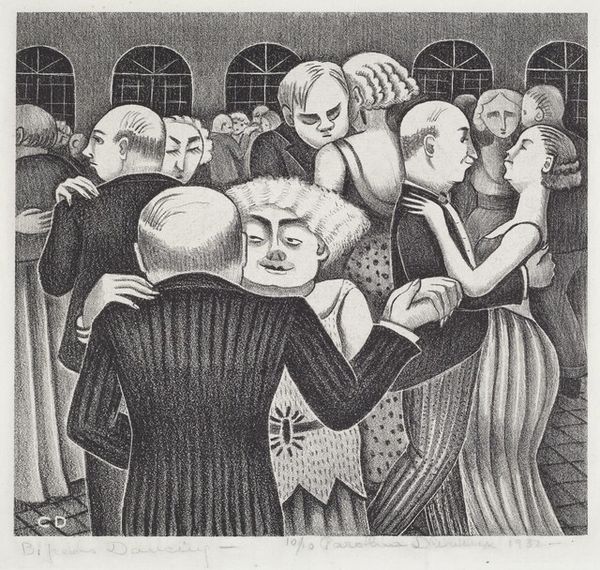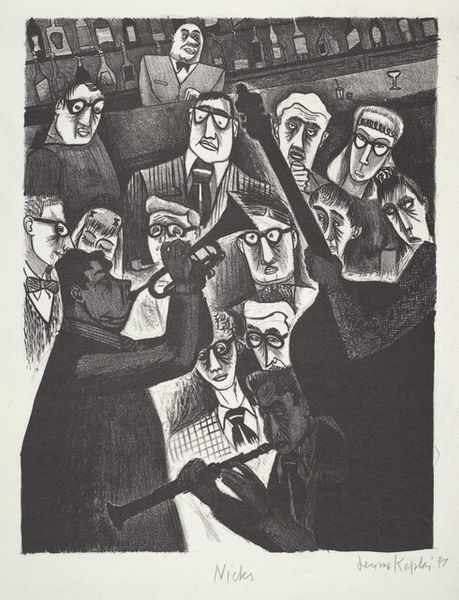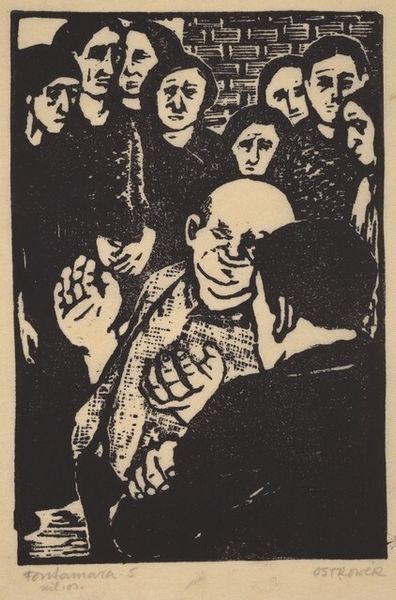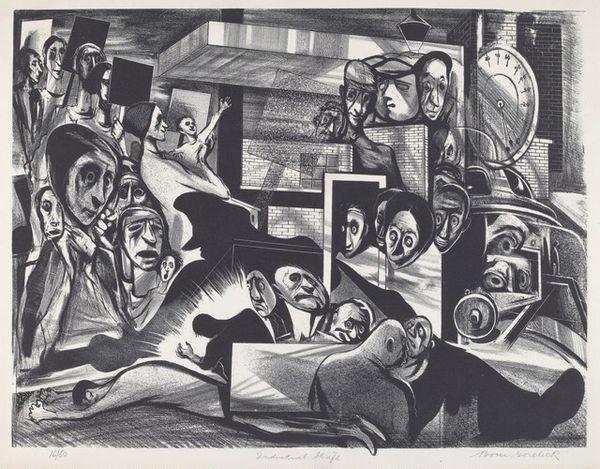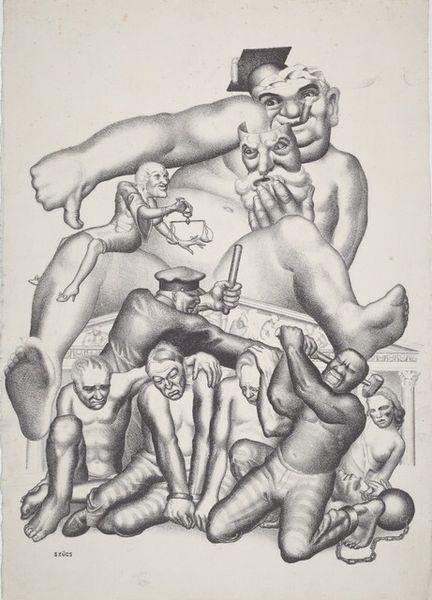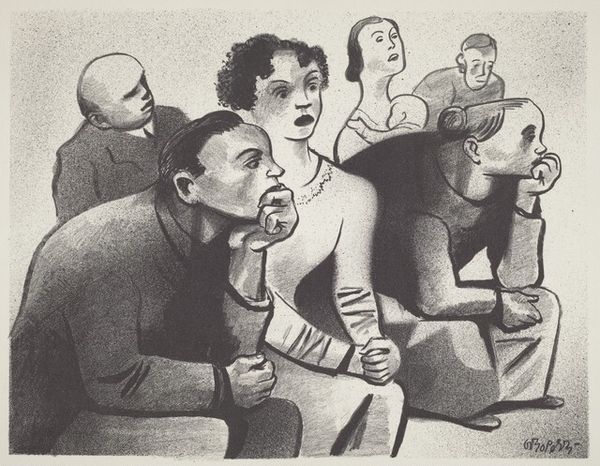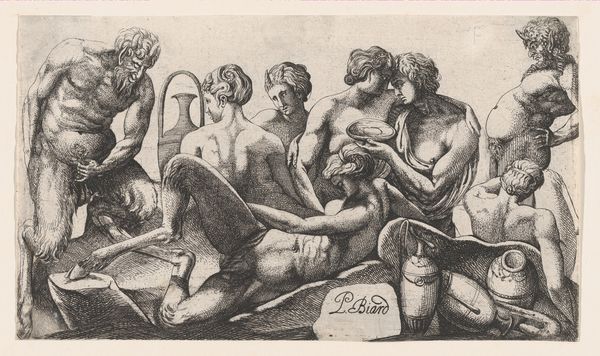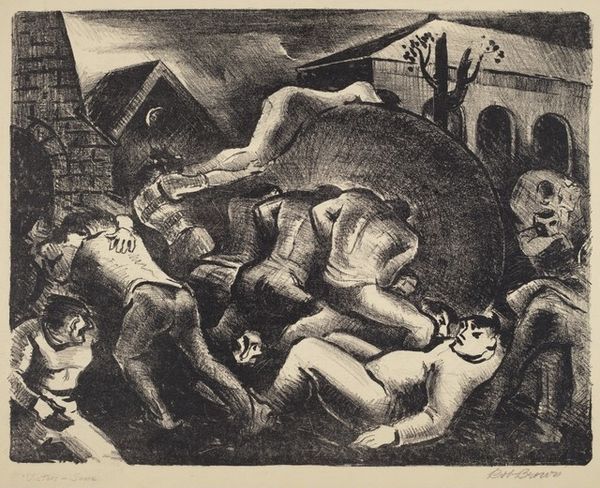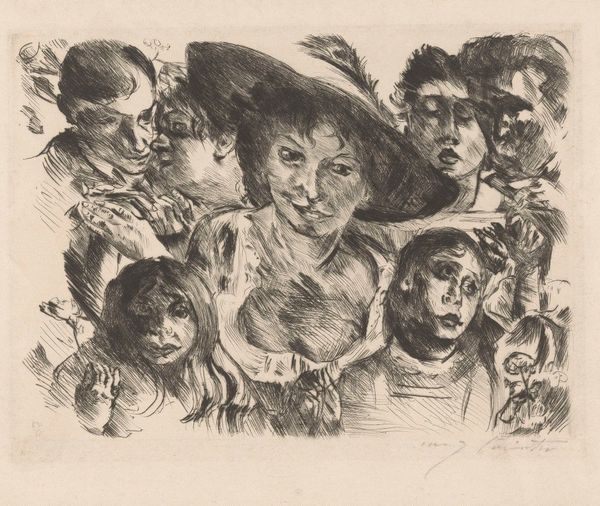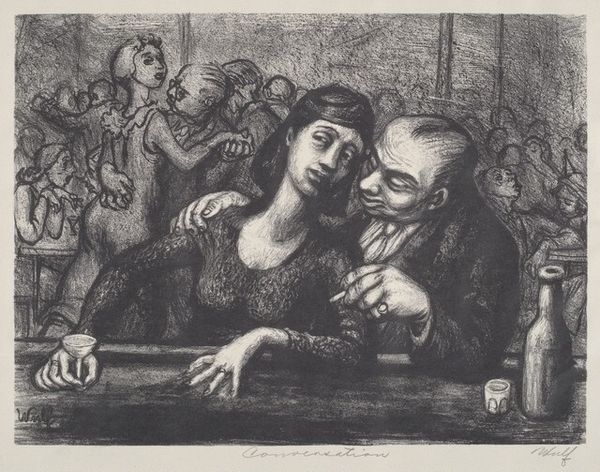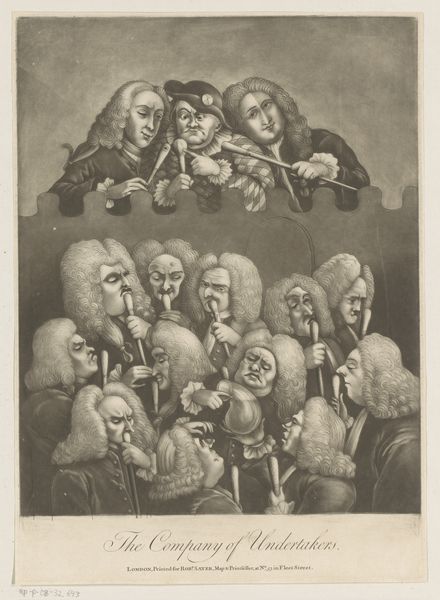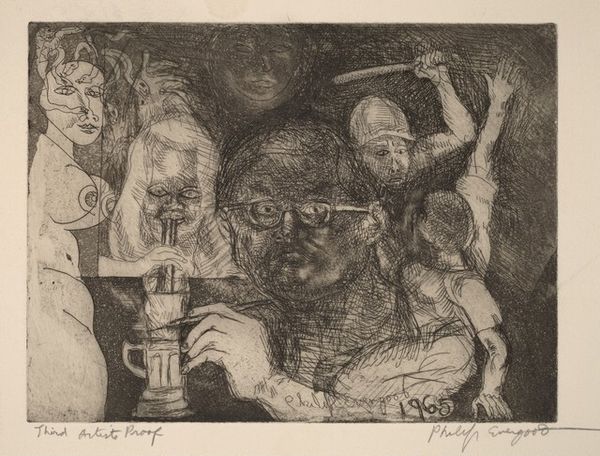
drawing, print, graphite
#
portrait
#
drawing
# print
#
caricature
#
caricature
#
figuration
#
group-portraits
#
line
#
graphite
#
portrait drawing
#
academic-art
#
modernism
Dimensions: Image: 202 x 251 mm Sheet: 297 x 356 mm
Copyright: National Gallery of Art: CC0 1.0
Editor: So, this is Elise Donaldson's "Exhibition Committee" from 1945. It's a print, probably graphite, a kind of caricature portrait. I’m struck by how crammed everyone is into the frame. What do you see in this piece, thinking about its context? Curator: I see a fascinating commentary on the gatekeepers of the art world and their relationship to "Modern Art," as it says right there on one figure's shirt. The artist uses accessible materials - graphite and printmaking techniques. The social context is so important: this was made during a time when "modern art" was increasingly influential. Are the figures really celebrating the shirt-wearer's "modern art," or is this an inside jab at the commodification and industrialization of creativity that critics were beginning to worry about? Editor: That's a good point! I hadn’t really considered the idea of it being a bit sarcastic. Do you think that the way Donaldson has massed the figures together relates to that too? Curator: Exactly! The very construction of the image emphasizes a point about how mass movements need workers and material goods in order to actually move. A “movement” is nothing without these things. The pressure and close composition of the figures seems almost like the pressure being put on modern artists at the time. Is it also a suggestion that modern art needs its champions more than they care to embrace it? What labor do you see being mocked here, either in process or material? Editor: I guess you could say the manual labor involved in traditional art practices is being overshadowed, as new industrialized and material driven works are coming into favor. Seeing it that way changes my entire interpretation. Thanks! Curator: My pleasure! It is interesting how a seemingly straightforward portrait can reveal a much more complex engagement with the art world's materials and systems of value.
Comments
No comments
Be the first to comment and join the conversation on the ultimate creative platform.
